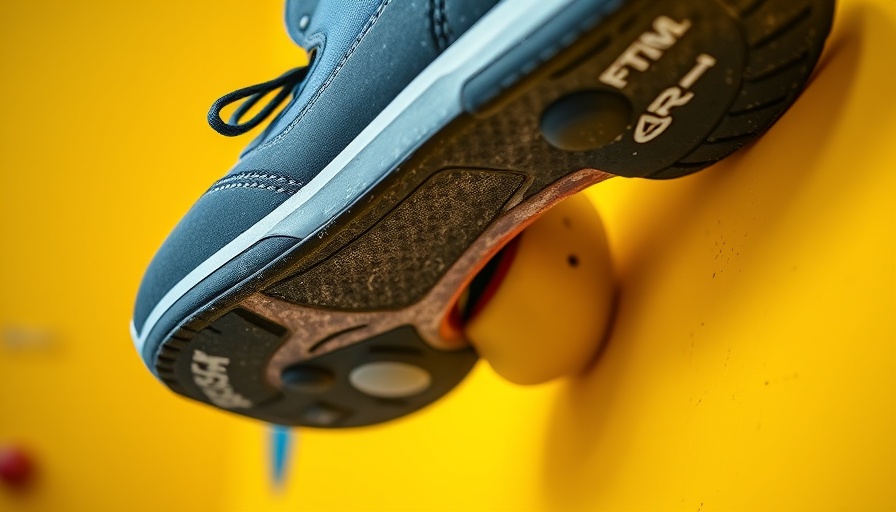
Unveiling Hidden Dangers: The Impact of Climbing Shoes on Air Quality
As climbing gyms become popular hubs for fitness enthusiasts, a recent study is prompting climbers to rethink their gear. Researchers found that the durable rubber used in climbing shoes isn’t just effective for grip on holds; it also sheds potentially harmful chemicals into the air we breathe while climbing. This revelation is crucial for those who regular bouldering sessions, as the air quality in these gyms may not be as safe as previously assumed.
When Climbing Gear Meets Chemical Exposure
The study published in Environmental Science and Technology Air highlights a critical connection between climbing shoes and the chemical pollution they may introduce into indoor environments. Climbing shoes, like car tires, are made from performance-driven materials designed to endure friction and wear. Anya Sherman, the study's first author, draws a comparison that raises eyebrows: “The soles of climbing shoes are high performance products, just like car tires.” Just as tires shed nanoplastics into the environment, climbing shoes release rubber-derived compounds (RDCs) while athletes tackle challenging routes.
An Overlooked Source of Indoor Air Pollution
The tests conducted across five climbing gyms in Vienna showed that levels of rubber-derived compounds in the air often rivalled those found near busy roads in major cities. High concentrations of 15 dangerous chemicals, including 6PPD—the same compound linked to harm to salmon populations due to runoff—were discovered both on climbing holds and in the air. Researchers estimate that gym-goers may be inhaling and ingesting significant amounts of these chemicals, adding another layer to the discussion of athlete safety and environmental health.
What This Means for Gym-goers and Manufacturers
The findings are alarming not only for the regulars scaling indoor walls but also for gym staff and shoe manufacturers. While climbers revel in the thrill and physical challenges of their sport, they may inadvertently be exposing themselves to substantial health risks. Notably, many climbers might not be aware of the potential pollutants their climbing shoes release. Even more concerning, the manufacturers may not fully recognize the environmental impact of their products.
Building Awareness and Improving Indoor Air Quality
Despite these risks, there's a silver lining. Many climbing gym staff are keen to participate in efforts aimed at reducing the levels of these rubber compounds in the air. Climbing enthusiasts looking to mitigate their exposure can take proactive steps, such as choosing equipment from brands that prioritize eco-friendly materials or advocating for better air quality practices in their local gyms.
How You Can Make a Difference
As a climbing enthusiast, it’s essential to explore how one can minimize their carbon footprint and health risks. Consider bringing awareness to gym management and manufacturers. Asking for ventilation improvements or championing the use of safer materials can make a significant difference over time. It’s about making informed choices and pushing for change within the climbing community.
This study throws a spotlight on a crucial yet often neglected aspect of our indoor spaces. By understanding the implications of our climbing gear, we can promote a healthier environment for ourselves and future climbers. Together, let’s advocate for cleaner air and sustainable practices in climbing gyms.
 Add Row
Add Row  Add
Add 



 Add Row
Add Row  Add
Add 

Write A Comment